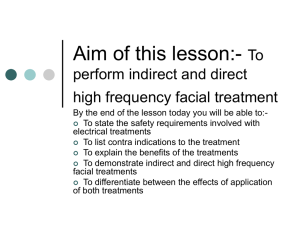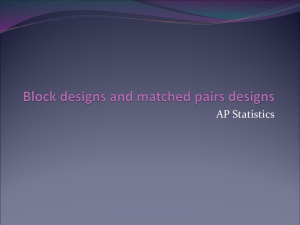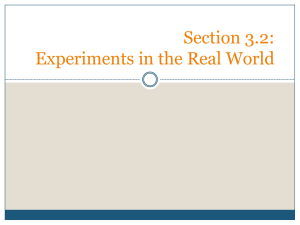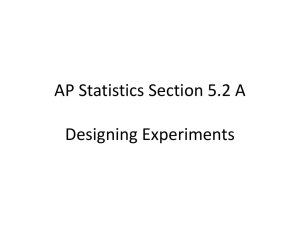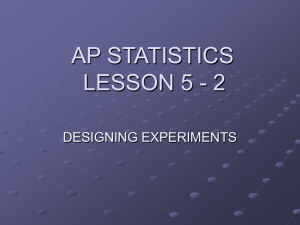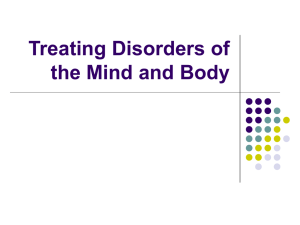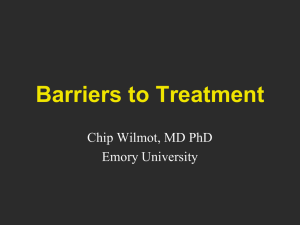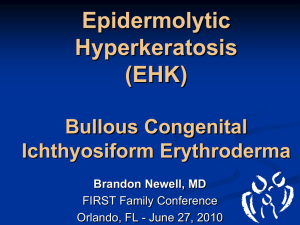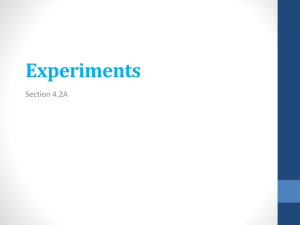The Appeal of Unvalidated Treatments
advertisement
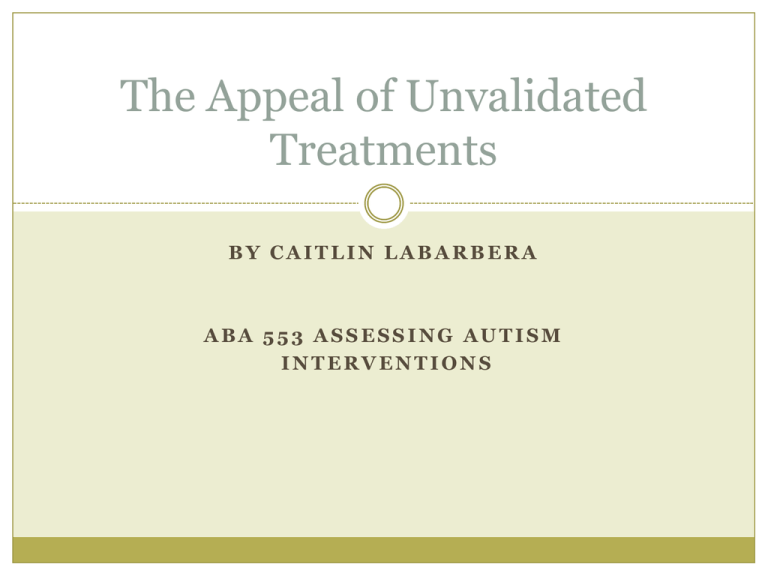
The Appeal of Unvalidated Treatments BY CAITLIN LABARBERA ABA 553 ASSESSING AUTISM INTERVENTIONS Introduction With the rise of autism and other developmental disabilities there is a new claim for a cure around every corner. Introduction With all these new “fad” treatments, we as professionals need to be able to identify interventions that are both validated and plausible. Validated Treatments Scientifically Valid Treatments Involve Increasing skills in specific areas Improving functioning in every day situations Contain controlled studies Consistent with previous knowledge Treatments with solid scientific support: Applied Behavior Analysis Psychotropic Medication Unvalidated Treatments Pseudoscientific Treatments Interventions that are considered to have little to no scientific basis Appealing because they are advertised as Cures Fast and Easy “Deeper” Benefits Natural How can you determine if a treatment is both validated and plausible, or if it is just another fad? Tristram Smith gives us several key pointers on picking out Scientifically Valid Treatments while weeding out Pseudoscientific Interventions. Cure We found a cure… Popular interventions that “found a cure” included: Facilitated Communication Auditory Integration Training Gentle Teaching All were found to be infective and some proved to create problems instead of eliminating them. Important Sounding but Vague Benefits Important Sounding but Vague Benefits Lack scientific evaluations Lack controlled studies Benefits are so vague that testing them would be difficult if not impossible. http://www.youtube.com/watch?v=8JdDU0Ql8EI Controlled vs. Uncontrolled Studies ABA and Psychotropic Medication – Scientifically rigorous and controlled studies Unvalidated treatments – Make no distinction between rigorous and nonrigorous studies Uncontrolled Lack objective measures Megavitamin Therapies Technology Technology has extraordinary uses in science but having technology in a treatment does not mean that the treatment is ligament. Is the technology used reliable and does it support the study? Criticisms of Validated Treatments Criticism may be used to justify implementing their own interventions Using criticism to hide one of their own faults “Criticisms of one treatment or its practitioners do not constitute evidence for the effectiveness of another treatment (Smith 2005) .” Subjective Evidence Unvalidated interventions tend to rely on Testimonies Case from parents studies Surveys Popularity Longevity These things cannot be substitute for a controlled study http://www.youtube.com/watch?v=3qR6aDkVjYY Example: Diets – Eliminating Dairy and Wheat. Is it really the diet? Parents desire to see gains Protein deficiency Spending more time with child Deprivation – Motivation Other environmental changes Core Deficits Once the deficit is corrected there will be global improvements in functioning Two believed deficits include: The lack of ability to form reciprocal relationships Problem in processing or sensory input Proposing that changes in one behavior will by itself lead to changes in other behaviors goes against a large body of research on humans and other organisms in both clinical and laboratory settings (Detterman&Sternberg,1995). Natural Therapies “Natural Therapies” Special diets to eliminate food additives Cut out wheat a dairy Chelation therapy Antifungal medications Shunning vaccinations “Natural” does not mean safe or effective. Treatment Combinations Treatments are often combined in hopes to accelerate and maximize treatment Some treatments encourage combinations Megavitamins Reality - combining treatments have no effect and can even reduce effectiveness of treatments. Experimenting Implementing a new treatment First, make only one treatment change at a time Second, Identify specific target behaviors Use objective measures to obtain a baseline Finally, monitor changes in the target behavior on an on going basis with objective measures obtained by raters who are blind to treatment. • HYMAN AND LEVY (2000) http://www.youtube.com/watch?v=qbhkX2oBmJ Y What would be appealing? How many red flags can you pick out? Evaluating Treatments Treatments that are both validated and plausible Treatments that are Unvalidated and implausible Reference Jacobson, J. W., Foxx, R. M., & Mulick, J. A. (2005). Controversial therapies for developmental disabilities, fad, fashion, and science in professional practice. Lawrence Erlbaum. http://www.youtube.com/watch?v=s6Svp81lPhQ
